| View previous topic :: View next topic |
| Author |
Message |
Jeff Zen


Joined: 17 Jun 2009
Posts: 262
Location: Northwest USA
|
 Posted: Sun Jan 10, 2010 6:38 pm Post subject: Vivitar 200mm f3.5 18 blade--How Old Is It!? Posted: Sun Jan 10, 2010 6:38 pm Post subject: Vivitar 200mm f3.5 18 blade--How Old Is It!? |
 |
|
Jeff Zen wrote:
I recently bought this old Vivitar 200mm f3.5 18-blade preset lens for under $20. I have seen later versions online but no information on this particular model. It is reasonably sharp wide open and an excellent all around performer.
Some CA, but this is a non-issue for me since it takes only seconds to correct in photoshop. (I use Replace Color Adjustment.) It definitely could use a hood as it does flare in some situations, but less than I expected.
I think this is a very sexy lens and I would appreciate any information as to date and place of manufacture, even if you are just making an educated guess. Thanks!
Ps. What does the red R on the DOF scale mean?
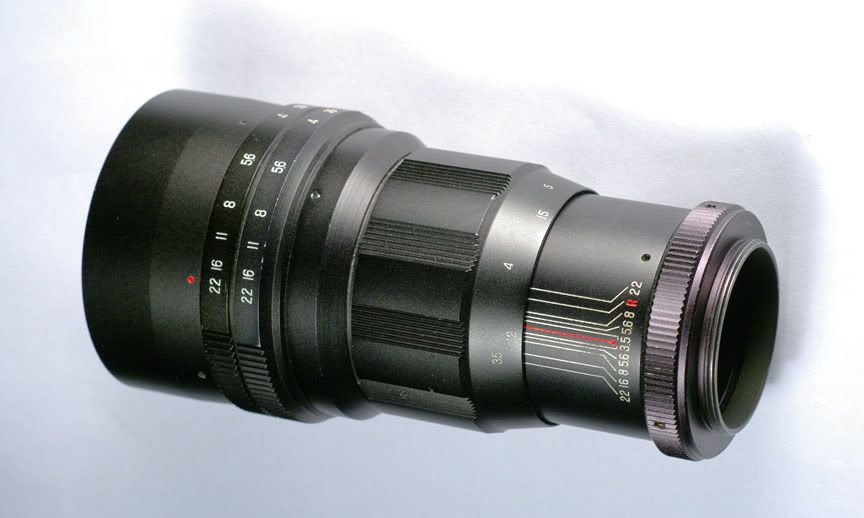
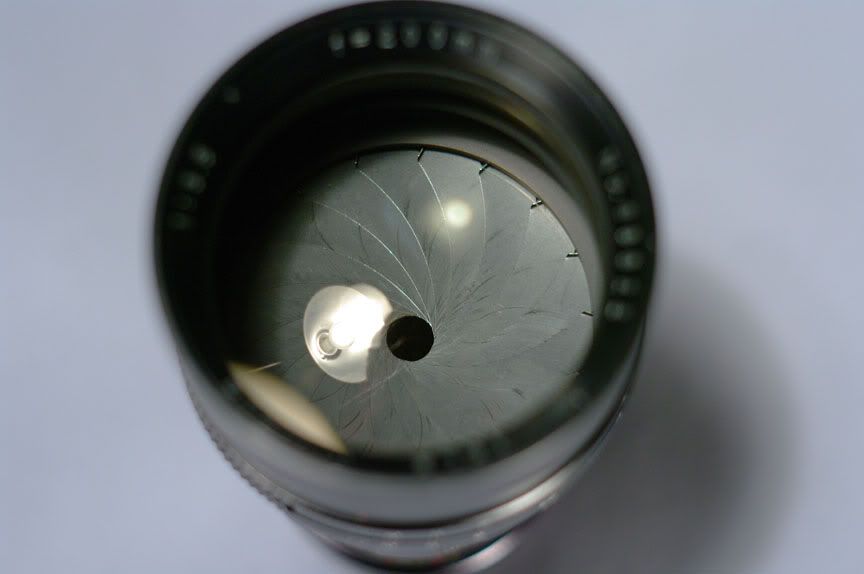
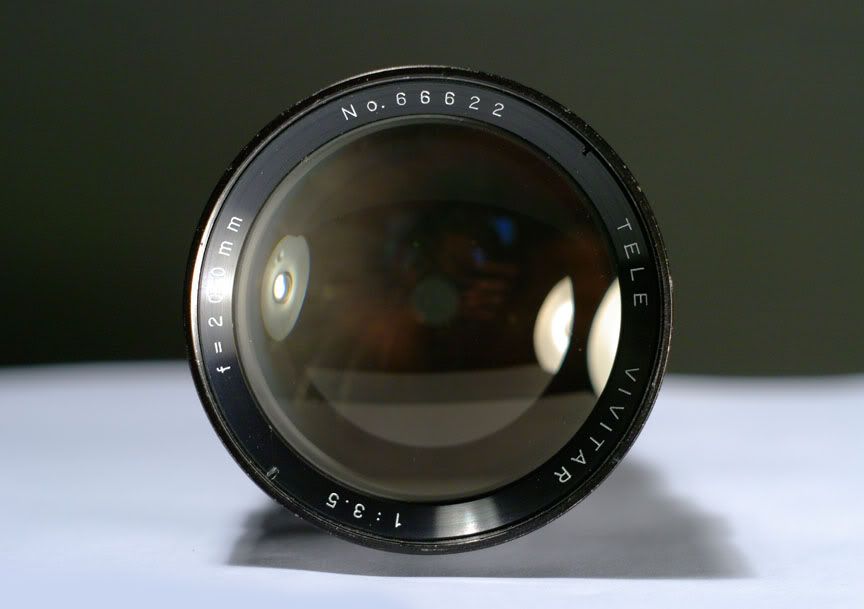 |
|
| Back to top |
|
 |
luisalegria


Joined: 07 Mar 2008
Posts: 6602
Location: San Francisco, USA
Expire: 2018-01-18
|
 Posted: Sun Jan 10, 2010 6:52 pm Post subject: Posted: Sun Jan 10, 2010 6:52 pm Post subject: |
 |
|
luisalegria wrote:
Its from the mid-late 1960's, one of the first set of lenses sold under the Vivitar brand, perhaps the first 200mm Vivitar.
The maker seems to be the same one that was responsible for all these early preset Vivitars. The distinctive slotted aperture mechanism is the main unique feature of these.
Member Big Dawg has a nice collection of these btw.
My guess is the maker was Kino/Kiron, mainly by a process of elimination. Because its not similar to known presets made by major third-party makers of the day, Taisei/Tamron, Tokyo Koki/Tokina, Nittoh/Komine, Kawakami/Kawanon, Sankyo/Sankor, etc., someone with manufacturing capacity and expertise had to have made these. Kino/Kiron had to have gotten its start in this business somehow, and I have never identified a true Kino-made preset before.
_________________
I like Pentax DSLR's, Exaktas, M42 bodies of all kinds, strange and cheap Japanese lenses, and am dabbling in medium format/Speed Graphic work. |
|
| Back to top |
|
 |
martinsmith99


Joined: 31 Aug 2008
Posts: 6950
Location: S Glos, UK
Expire: 2013-11-18
|
 Posted: Sun Jan 10, 2010 7:27 pm Post subject: Posted: Sun Jan 10, 2010 7:27 pm Post subject: |
 |
|
martinsmith99 wrote:
Isn't that serial number indicative of Olympus made Vivs, or is this before the numbers gave away the makers?
_________________
Casual attendance these days |
|
| Back to top |
|
 |
luisalegria


Joined: 07 Mar 2008
Posts: 6602
Location: San Francisco, USA
Expire: 2018-01-18
|
 Posted: Sun Jan 10, 2010 7:39 pm Post subject: Posted: Sun Jan 10, 2010 7:39 pm Post subject: |
 |
|
luisalegria wrote:
This is indeed from before the days of the serial number system.
_________________
I like Pentax DSLR's, Exaktas, M42 bodies of all kinds, strange and cheap Japanese lenses, and am dabbling in medium format/Speed Graphic work. |
|
| Back to top |
|
 |
Jeff Zen


Joined: 17 Jun 2009
Posts: 262
Location: Northwest USA
|
 Posted: Sun Jan 10, 2010 8:20 pm Post subject: Posted: Sun Jan 10, 2010 8:20 pm Post subject: |
 |
|
Jeff Zen wrote:
Thank you luisalegria. I greatly value your insight. I figured BigDawg was the go-to guy for older Vivitars. I wonder if he can shed further light on the subject.
It's a shame we don't have documentation on who manufactured these earlier Vivitars. Actually I wonder if the serial number documentation we do have is entirely accurate. I have no reason to doubt it other than my conviction that there is way too much disinformation on the web. Call me cynical.
Here are some test shots taken with this lens:


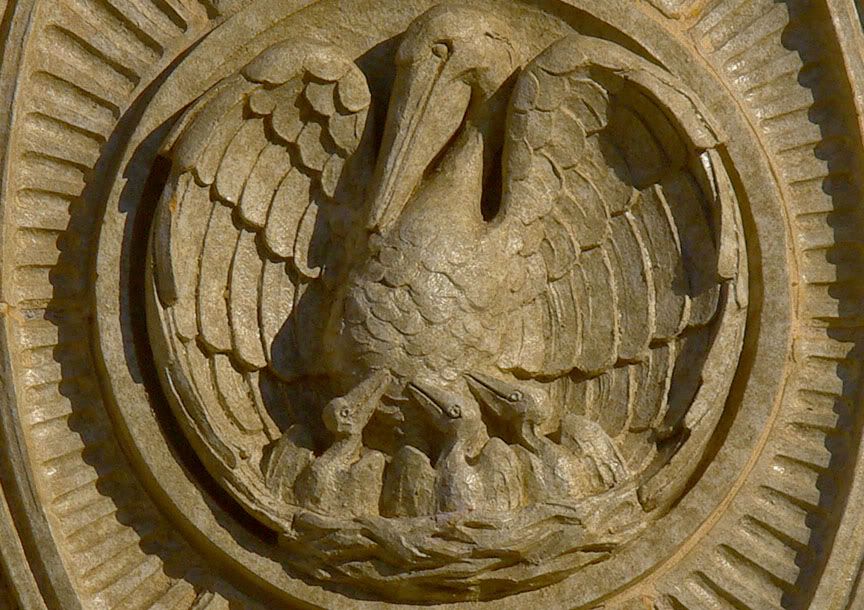 |
|
| Back to top |
|
 |
no-X


Joined: 19 Jul 2008
Posts: 2495
Location: Budejky, Czech Republic
|
 Posted: Sun Jan 10, 2010 10:08 pm Post subject: Posted: Sun Jan 10, 2010 10:08 pm Post subject: |
 |
|
no-X wrote:
This lens was very likely made by the same manufacturer as the 85/1.8 Vivitar. Some users says it is old Tokina lens, but I think there's no proof of that.
_________________
(almost) complete list of Helios lenses |
|
| Back to top |
|
 |
estudleon


Joined: 15 May 2008
Posts: 3754
Location: Argentina
|
 Posted: Mon Jan 11, 2010 11:59 am Post subject: Posted: Mon Jan 11, 2010 11:59 am Post subject: |
 |
|
estudleon wrote:
Yes. It seems to me that the vivitar 1,8/85 and that 200 mm lenses were made by the same maker.
I find that the rendering of the 200 lens is very similar (in color and contrast) than my mamiya sekor 2,8/135.
Oh, perhaps the maker of the vivitar 1,8/85 and the mamiya 2,8/135 can be tokina. The 200 was a tokina one too?
Rino.
_________________
Konica 2,8/100
CZJ: 4/20, 2,4/35, 1,8/50 aus jena, 3,5/135MC, Pentacon 1,8/50
Pentax S-M-C-1,4/50
Helios 44-3
Mamiya 2,8/135
Misc. : jupiter 9
Stuff used:
A) SRL
Alpa 10 D - kern macro Switar 1,9/50 -black, Kilffit apochromat 2/100.
Asahi pentax spotmatic super takumar 1,4/50
Contaflex super B tessar 2,8/50 Pro-tessar 115
Leica R3 electronic summicron 2/50 elmarit 2,8/35
Konica Autoreflex 3 (2 black and chrome one), TC, T4. 2,8/24, 3,5/28 not MC and MC, 1,8/40, 1,4/50, 1,7/50 MC and not MC, 1,8/85, 3,2/135, 3,5/135, 4/200
Minolta XG9 2,8/35, 2/45, 3,5/135
Nikkormat FTn 1,4/50, 2,8/135
Fujica ST 801, 605, 705n. 3,5/19, 1,4/50, 1,8/55, 4/85, 3,5/135.
Praktica MTL 5 and a lot of M42 lenses.
Voigtlander. Bessamatic m, bessamatix de luxe, bessamatic cs, ultramatic and ultramatic cs.
Skoparex 3,5/35, skopagon 2/40, skopar 2,8/50, skopar X 2,8/50, super lanthar (out of catalogue) 2,8/50, dinarex 3,4/90, dinarex 4,8/100, super dinarex 4/135, super dinarex 4/200, zoomar 2,8/36-83, portrait lens 0, 1 and 2. Curtagon 4/28 and 2,8/35
Canon AV1, 1,8/50
Rolleiflex SL35 and SL35 E. 2,8/35 angulon, 2,8/35 distagon, 1,4/55 rolleinar, 1,8/50 planar, 4/135 tessar, 2,8/135 rolleinar, x2 rollei, M42 to rollei adap.
Etc.
RF
Yashica Minister III
Voightlander Vito, vitomatic I, Vito C, etc.
Leica M. M2, M3 (d.s.) and M4. Schenider 3,4/21, 2/35 summaron 2,8/35 (with eyes). Summicron 2/35 (8 elements with eyes), 2/35 chrome, 2/35 black, 1,4/35 pre asph and aspheric - old -, 2/40 summicron, 2,8/50 elmar, 2/50 7 elements, 2/50 DR, 2/50 - minolta version, 1,4/50 summilux 1966 version, 1,4/75 summilux, 2/90 large version, 2/90 reduced version of 1987, 2,8/90 elmarit large version, 4/135 elmar. |
|
| Back to top |
|
 |
martinsmith99


Joined: 31 Aug 2008
Posts: 6950
Location: S Glos, UK
Expire: 2013-11-18
|
 Posted: Mon Jan 11, 2010 12:57 pm Post subject: Posted: Mon Jan 11, 2010 12:57 pm Post subject: |
 |
|
martinsmith99 wrote:
That 1st image has a fantastic vintage look to it.
_________________
Casual attendance these days |
|
| Back to top |
|
 |
scsambrook


Joined: 29 Mar 2009
Posts: 2167
Location: Glasgow Scotland
Expire: 2011-11-18
|
 Posted: Mon Jan 11, 2010 1:04 pm Post subject: Posted: Mon Jan 11, 2010 1:04 pm Post subject: |
 |
|
scsambrook wrote:
"Ps. What does the red R on the DOF scale mean?"
That's for when using infra-red film - you focus as usual, note the distance on the scale and then shift the reading to the R mark. Not many people ever used IR film, but the makers back then maybe assumed they should cater for all eventualities.
_________________
Stephen
Equipment: Pentax DSLR for casual shooting, Lumix G1 and Fuji XE-1 for playing with old lenses, and Leica M8 because I still like the optical rangefinder system. |
|
| Back to top |
|
 |
andyw


Joined: 15 Aug 2009
Posts: 624
Location: Surrey. UK
|
 Posted: Mon Jan 11, 2010 1:10 pm Post subject: Posted: Mon Jan 11, 2010 1:10 pm Post subject: |
 |
|
andyw wrote:
Awesome pics!!! Greta colors and sharp as a tak!
_________________
Andy
My Flickr |
|
| Back to top |
|
 |
fatdeeman


Joined: 13 Jun 2009
Posts: 780
Location: UK
|
 Posted: Mon Jan 11, 2010 6:46 pm Post subject: Posted: Mon Jan 11, 2010 6:46 pm Post subject: |
 |
|
fatdeeman wrote:
Nice pics and a nice looking lens!
_________________
- Dave
www.lensporn.net
www.flickr.com/photos/fatdeeman/
DSLR: Canon EOS 60D, Samsung GX-1S (Pentax *ist DS2)
Mirrorless: Panasonic DMC-G1, Sony NEX-5N
Compact: Canon PowerShot G3
Lenses:
Wide: Tokina RMC 28mm F/2.8, Tamron Adaptall 2 28mm F/2.5, Sun Optical 28mm F/2.5, Super paragon 28mm F/2.8, Sigma filtermatic 24mm F/2.8, Fujinon 35mm F/2.8, Sun Optical 35mm F/2.8
Standard: Industar 50-2, Helios 44-2, Helios 44M, Helios 44M-3, Pentax-M 50mm F/1.4, Pentax-M 50mm F/1.7, Pentax-M 50mm F/2, Ricoh 50mm F/1.7, Chinon 50mm F/1.7
Tele: Pentacon 135mm F/2.8, Pentacon 200mm F/3.5, Optomax 200mm f/3.5, Sun Optical 135mm F/3.5, Soligor 350mm F/5.6
Zoom: Tokina 28-70mm f/3.5-4.5 SZ-X270 SD, Sigma Zoom Pi 35-200mm F4-5.6, Sun Optical 28-80mm F/3.5-4.5, Sunagor 80-205mm F/3.8, Tokina RMC 80-200mm F/4, Vivitar 70-150mm F/3.8, Tamron 95-205mm F/6.3, Tamron Adaptall 28-200mm F/3.8-5.6 LD Aspherical, Tokina RMC 70-210mm F/3.5
Mirror: Falcon (Samyang) 800mm F/8, MTO-11CA 1000mm F/10, Tamron Adaptall 2 500mm F/8
|
|
| Back to top |
|
 |
Big Dawg


Joined: 28 Jan 2009
Posts: 2530
Location: Thach Alabama
|
 Posted: Tue Jan 12, 2010 9:27 am Post subject: Posted: Tue Jan 12, 2010 9:27 am Post subject: |
 |
|
Big Dawg wrote:
A great lens and one of my favorites. As to the maker....Who knows? Some say this is one of the ones made for Vivitar by Olympus. Durring this period Vivitar would buy from whomever had the best price and quality. All I know is it likes my 2X 22 Vivitar teleconverter. Great shots with it. Other than some Chromatic aberration and flair it is a nice contrasty lens with very good color and smooth Bokeh. Don't back light your subject and the Chroma is not apparent.
Go here for some of my photos taken with it.
http://forum.mflenses.com/a-few-photos-with-a-vivitar-200mm-f-3-5-preset-lens-t20502.html
And here for some more...Please forgive my poor shooting skills.
http://forum.mflenses.com/a-few-more-with-the-viv-200mm-pre-set-lens-t20569.html
One precaution with these Vivitar Pre-set lenses.....Be easy on moving the aperture rings. The blades can come loose from the Iris ring if you slam them around. Also some have reported breaking the blades. Just move them smoothly and you will have no problems.
_________________
Big Dawg |
|
| Back to top |
|
 |
estudleon


Joined: 15 May 2008
Posts: 3754
Location: Argentina
|
 Posted: Tue Jan 12, 2010 4:12 pm Post subject: Posted: Tue Jan 12, 2010 4:12 pm Post subject: |
 |
|
estudleon wrote:
| Big Dawg wrote: |
A great lens and one of my favorites. As to the maker....Who knows? Some say this is one of the ones made for Vivitar by Olympus. Durring this period Vivitar would buy from whomever had the best price and quality. All I know is it likes my 2X 22 Vivitar teleconverter. Great shots with it. Other than some Chromatic aberration and flair it is a nice contrasty lens with very good color and smooth Bokeh. Don't back light your subject and the Chroma is not apparent.
Go here for some of my photos taken with it.
http://forum.mflenses.com/a-few-photos-with-a-vivitar-200mm-f-3-5-preset-lens-t20502.html
And here for some more...Please forgive my poor shooting skills.
http://forum.mflenses.com/a-few-more-with-the-viv-200mm-pre-set-lens-t20569.html
One precaution with these Vivitar Pre-set lenses.....Be easy on moving the aperture rings. The blades can come loose from the Iris ring if you slam them around. Also some have reported breaking the blades. Just move them smoothly and you will have no problems. |
Very nice pics !!
I like very much. Good lens too.
Rino.
_________________
Konica 2,8/100
CZJ: 4/20, 2,4/35, 1,8/50 aus jena, 3,5/135MC, Pentacon 1,8/50
Pentax S-M-C-1,4/50
Helios 44-3
Mamiya 2,8/135
Misc. : jupiter 9
Stuff used:
A) SRL
Alpa 10 D - kern macro Switar 1,9/50 -black, Kilffit apochromat 2/100.
Asahi pentax spotmatic super takumar 1,4/50
Contaflex super B tessar 2,8/50 Pro-tessar 115
Leica R3 electronic summicron 2/50 elmarit 2,8/35
Konica Autoreflex 3 (2 black and chrome one), TC, T4. 2,8/24, 3,5/28 not MC and MC, 1,8/40, 1,4/50, 1,7/50 MC and not MC, 1,8/85, 3,2/135, 3,5/135, 4/200
Minolta XG9 2,8/35, 2/45, 3,5/135
Nikkormat FTn 1,4/50, 2,8/135
Fujica ST 801, 605, 705n. 3,5/19, 1,4/50, 1,8/55, 4/85, 3,5/135.
Praktica MTL 5 and a lot of M42 lenses.
Voigtlander. Bessamatic m, bessamatix de luxe, bessamatic cs, ultramatic and ultramatic cs.
Skoparex 3,5/35, skopagon 2/40, skopar 2,8/50, skopar X 2,8/50, super lanthar (out of catalogue) 2,8/50, dinarex 3,4/90, dinarex 4,8/100, super dinarex 4/135, super dinarex 4/200, zoomar 2,8/36-83, portrait lens 0, 1 and 2. Curtagon 4/28 and 2,8/35
Canon AV1, 1,8/50
Rolleiflex SL35 and SL35 E. 2,8/35 angulon, 2,8/35 distagon, 1,4/55 rolleinar, 1,8/50 planar, 4/135 tessar, 2,8/135 rolleinar, x2 rollei, M42 to rollei adap.
Etc.
RF
Yashica Minister III
Voightlander Vito, vitomatic I, Vito C, etc.
Leica M. M2, M3 (d.s.) and M4. Schenider 3,4/21, 2/35 summaron 2,8/35 (with eyes). Summicron 2/35 (8 elements with eyes), 2/35 chrome, 2/35 black, 1,4/35 pre asph and aspheric - old -, 2/40 summicron, 2,8/50 elmar, 2/50 7 elements, 2/50 DR, 2/50 - minolta version, 1,4/50 summilux 1966 version, 1,4/75 summilux, 2/90 large version, 2/90 reduced version of 1987, 2,8/90 elmarit large version, 4/135 elmar. |
|
| Back to top |
|
 |
Jeff Zen


Joined: 17 Jun 2009
Posts: 262
Location: Northwest USA
|
 Posted: Wed Jan 13, 2010 1:24 am Post subject: Posted: Wed Jan 13, 2010 1:24 am Post subject: |
 |
|
Jeff Zen wrote:
Thanks Big Dawg for your valuable wisdom, and thanks scsambrook for solving the red dof "R" mystery. I wouldn't have guessed that.
Great forum! |
|
| Back to top |
|
 |
cooltouch


Joined: 15 Jan 2009
Posts: 9096
Location: Houston, Texas
|
 Posted: Wed Jan 13, 2010 4:40 am Post subject: Posted: Wed Jan 13, 2010 4:40 am Post subject: |
 |
|
cooltouch wrote:
Here's another Vivitar example that appears to have been made by the same maker -- the legendary 135mm f/1.5 "Professional":

I owned one of these for a long time, finally sold it a few years ago. Construction and cosmetics look to be very similar to your 200/3.5. As near as I was ever able to determine, my 135/1.5 was made in about 1968. Image note: I googled the above image. I have some pics of the one I used to own around here somewhere, but it would take quite a bit of digging to find them.
_________________
Michael
My Gear List: http://michaelmcbroom.com/photo/gear.html
My Gallery: http://michaelmcbroom.com/gallery3/index.php/
My Flickr Page: https://www.flickr.com/photos/11308754@N08/albums
My Music: https://soundcloud.com/michaelmcbroom/albums
My Blog: http://michaelmcbroom.com/blogistan/ |
|
| Back to top |
|
 |
Big Dawg


Joined: 28 Jan 2009
Posts: 2530
Location: Thach Alabama
|
 Posted: Thu Jan 14, 2010 6:05 am Post subject: Posted: Thu Jan 14, 2010 6:05 am Post subject: |
 |
|
Big Dawg wrote:
| cooltouch wrote: |
Here's another Vivitar example that appears to have been made by the same maker -- the legendary 135mm f/1.5 "Professional":

I owned one of these for a long time, finally sold it a few years ago. Construction and cosmetics look to be very similar to your 200/3.5. As near as I was ever able to determine, my 135/1.5 was made in about 1968. Image note: I googled the above image. I have some pics of the one I used to own around here somewhere, but it would take quite a bit of digging to find them. |
Saw one of those on Ebay. The price went out of sight. Wayy too much for this country boy.
_________________
Big Dawg |
|
| Back to top |
|
 |
Jeff Zen


Joined: 17 Jun 2009
Posts: 262
Location: Northwest USA
|
 Posted: Fri Jan 15, 2010 4:21 am Post subject: Posted: Fri Jan 15, 2010 4:21 am Post subject: |
 |
|
Jeff Zen wrote:
Very, very interesting Michael and Big Dawg. I was totally unaware that this lens existed, and apparently the folks at Vivitar had no idea either. There are some similarities between this lens and mine for sure, but also some differences. Here are some more photos of the 135mm f1.5 "Professional" that I found online. Note the differences in the Vivitar logo. That could possibly indicate that it came later than mine. The professional looks like it might have 16 blades that curve more than the 200mm at the aperture. Its less Tak-like than mine but both lenses are definitely related. Thanks for pointing that out.
Boy would I love to have one of these, or at least a Helios 40-2.
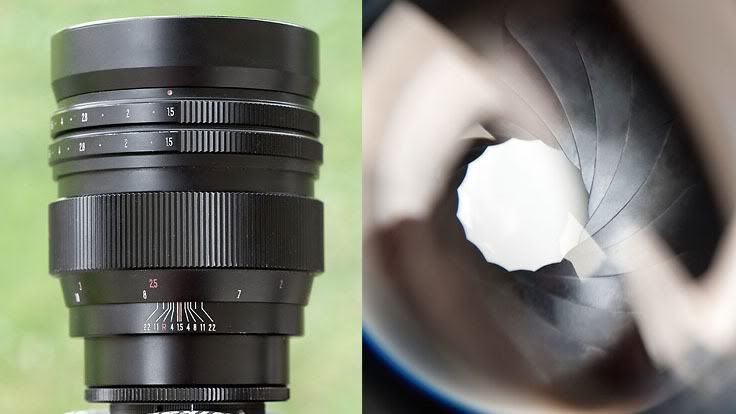
 |
|
| Back to top |
|
 |
espirit
Joined: 08 Nov 2010
Posts: 12
|
 Posted: Mon Nov 08, 2010 3:15 pm Post subject: Posted: Mon Nov 08, 2010 3:15 pm Post subject: |
 |
|
espirit wrote:
The red R on the DOF scale it's referente to focus for infra red photos. |
|
| Back to top |
|
 |
Pancolart


Joined: 04 Feb 2008
Posts: 3705
Location: Slovenia, EU
Expire: 2013-11-18
|
 Posted: Mon Nov 08, 2010 8:43 pm Post subject: Posted: Mon Nov 08, 2010 8:43 pm Post subject: |
 |
|
Pancolart wrote:
They all fit here - obviously the same producer:
http://forum.mflenses.com/mistery-lenses-collection-t23606.html
_________________
---------------------------------
The Peculiar Apparatus Of Victorian Steampunk Photography: 100+ Genuine Steampunk Camera Designs https://www.amazon.com/dp/B0B92829NS |
|
| Back to top |
|
 |
cooltouch


Joined: 15 Jan 2009
Posts: 9096
Location: Houston, Texas
|
 Posted: Mon Nov 08, 2010 8:46 pm Post subject: Posted: Mon Nov 08, 2010 8:46 pm Post subject: |
 |
|
cooltouch wrote:
Just noticed this old thread being resurrected. I don't recall seeing the images Jeff provided before. So let me just make a brief comment. The 135/1.5 pictured is, I believe, an earlier example than the one I owned. Mine said "Professional" on the front ring along with the rest of the info it has there. I believe the s/n on this old lens was also indicative of its year of manufacture. The one in Jeff's photo is 19671001, and I'm pretty sure that was the first lens produced in 1967. This would reinforce my argument that the one I owned, with its "Professional" label, came later. Manufacturers tend to add to labels and descriptions over time, rather than subtracting from them.
Perkin-Elmer also built some of Vivitar's optics. Perhaps this was one? Or maybe even this series? From one story I've read, one of Vivitar's early optical engineers was an ex-Perkin-Elmer employee, and apparently, they went to P-E for some of their work, especially the solid CATs.
_________________
Michael
My Gear List: http://michaelmcbroom.com/photo/gear.html
My Gallery: http://michaelmcbroom.com/gallery3/index.php/
My Flickr Page: https://www.flickr.com/photos/11308754@N08/albums
My Music: https://soundcloud.com/michaelmcbroom/albums
My Blog: http://michaelmcbroom.com/blogistan/ |
|
| Back to top |
|
 |
Big Dawg


Joined: 28 Jan 2009
Posts: 2530
Location: Thach Alabama
|
 Posted: Tue Nov 09, 2010 12:34 am Post subject: Posted: Tue Nov 09, 2010 12:34 am Post subject: |
 |
|
Big Dawg wrote:
There are different series of these early pre-set Vivitars. Some with the serial number of 5XXXX, some with 6XXXX and some with 7XXXX.(There are probably others) The first two usually with the early T-mount and the 7XXXX with a T2 mount. I always am a little aggravated when someone says T2 mount when it is an original T-mount. It can be confusing to some since a lot of the T2 adapters are T-T2's, usable on either one by the way.
From Wikipedia....
T-mount is a standard lens mount for cameras and other optical assemblies. The T2 version is a screw mount using a male M42x0.75 metric thread on the lens with a flange focal distance of 55 mm, and a mating female thread on a camera adapter or other optical component. This thread form is referred to as T-thread. (This should not be confused with the M42 lens mount which is also 42mm, but has a 1mm thread pitch.)
The "T" is said to stand for Tamron, a Japanese manufacturer, who in 1957 made a line of aftermarket camera lenses all using their T2 T-mount as a universal fit to 35mm SLR cameras of various manufacturers. The proprietary lens mount of each competitive manufacturer was adapted to the T-mount thread with a simple adapter. Thus a retailer could stock a small number of expensive lenses that would fit a large number of camera brands using a selection of inexpensive adapters.
The original T Mount slides onto a T mount lens. It is secured only by 3 set screws that match a channel on the lens mount so that the lens barrel is not deformed by the set screws, and it can therefore be removed with no problem.
The T-mount connection is a solely mechanical specification. Electrical or mechanical connections (such as for autofocus) are generally not provided, however Sigma's YS Mount featured an automatic diaphragm coupling.
The 7XXXX lens I've run into are the threaded versions thus T2 mounts. But then I'm still new at this and do not know it all! First step to knowledge is to admit ignorance., I say! LOL
I've often wondered and am in the process of seeking out the lens of each serial number series, to see if they indeed are separate series and possibly made sequentially as series. With the 5XXXbeing followed by a 6XXXX series followed by a 7XXXseries. And I mean a full series.....Well that is the excuse I'm giving my wife anyway!!!! LOL
_________________
Big Dawg |
|
| Back to top |
|
 |
SVP


Joined: 15 Jan 2009
Posts: 665
Location: Greece
Expire: 2017-12-17
|
 Posted: Tue Nov 09, 2010 9:00 am Post subject: Posted: Tue Nov 09, 2010 9:00 am Post subject: |
 |
|
SVP wrote:
| cooltouch wrote: |
| .......... The 135/1.5 pictured is, I believe, an earlier example than the one I owned. Mine said "Professional" on the front ring along with the rest of the info it has there. I believe the s/n on this old lens was also indicative of its year of manufacture. The one in Jeff's photo is 19671001, and I'm pretty sure that was the first lens produced in 1967. ........................... |
Strange, my copy is numbered 196811 and I though of it as being the 11th one produced in 1968:
http://forum.mflenses.com/userpix/20096/1068_Viv_135f15_b_1.jpg
http://forum.mflenses.com/userpix/20096/1068_Viv_135f15_c_1.jpg
Thus, #19671001 might not be the first but the 1001st produced in 1967? |
|
| Back to top |
|
 |
casualcollector


Joined: 01 Aug 2008
Posts: 749
Location: Spaced out on Florida's Space Coast
|
 Posted: Tue Nov 09, 2010 12:32 pm Post subject: Posted: Tue Nov 09, 2010 12:32 pm Post subject: |
 |
|
casualcollector wrote:
Or the first produced in 1967. The lens was an expensive proposition then and a thousand seems an optimistic number for the market to absorb.
_________________
In Search Of "R" Serial Soligors
Found: 135/2.8 #R407660, 200/4 #R405526, 300/5.5 #R411127 |
|
| Back to top |
|
 |
SVP


Joined: 15 Jan 2009
Posts: 665
Location: Greece
Expire: 2017-12-17
|
 Posted: Wed Nov 10, 2010 6:40 am Post subject: Posted: Wed Nov 10, 2010 6:40 am Post subject: |
 |
|
SVP wrote:
| casualcollector wrote: |
Or the first produced in 1967. The lens was an expensive proposition then and a thousand seems an optimistic number for the market to absorb. |
I'd agree, so for me the only reasonable explanation left is that in 1968 they apparently decided to change their numbering concept. |
|
| Back to top |
|
 |
cooltouch


Joined: 15 Jan 2009
Posts: 9096
Location: Houston, Texas
|
 Posted: Wed Nov 10, 2010 7:26 am Post subject: Posted: Wed Nov 10, 2010 7:26 am Post subject: |
 |
|
cooltouch wrote:
I think that sounds plausible. They saw how many of the 1967 run actually got sold, and just decided to drop a couple of digits.
_________________
Michael
My Gear List: http://michaelmcbroom.com/photo/gear.html
My Gallery: http://michaelmcbroom.com/gallery3/index.php/
My Flickr Page: https://www.flickr.com/photos/11308754@N08/albums
My Music: https://soundcloud.com/michaelmcbroom/albums
My Blog: http://michaelmcbroom.com/blogistan/ |
|
| Back to top |
|
 |
|
|
